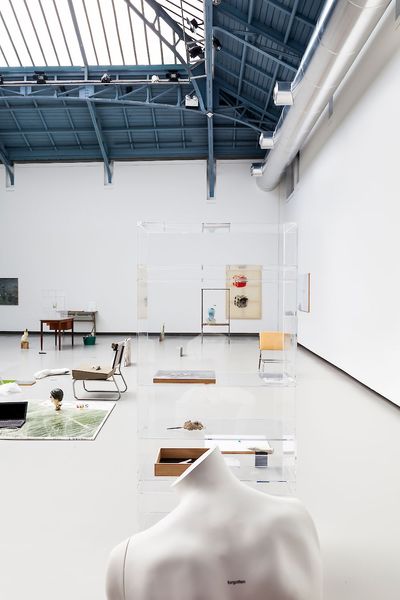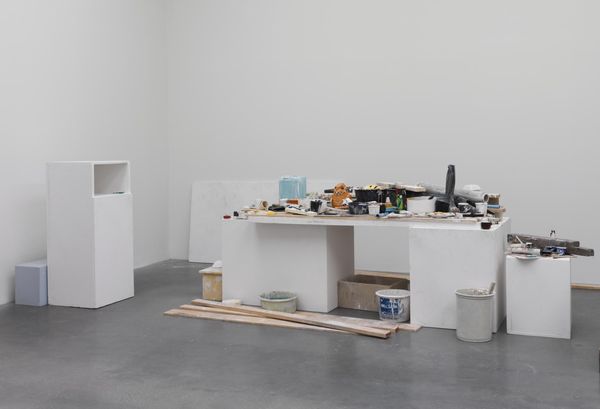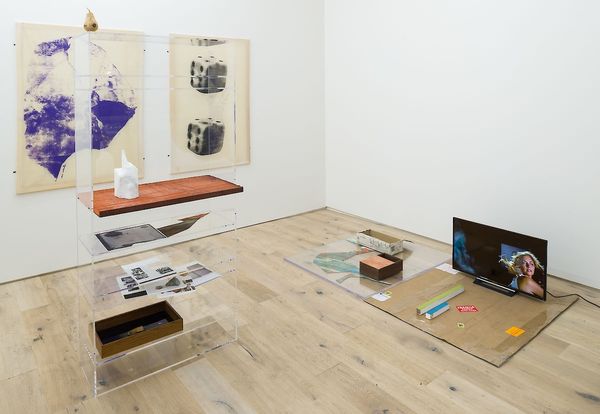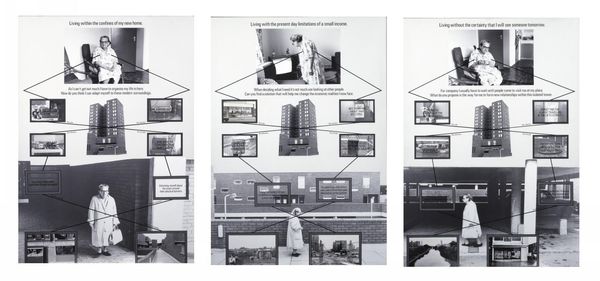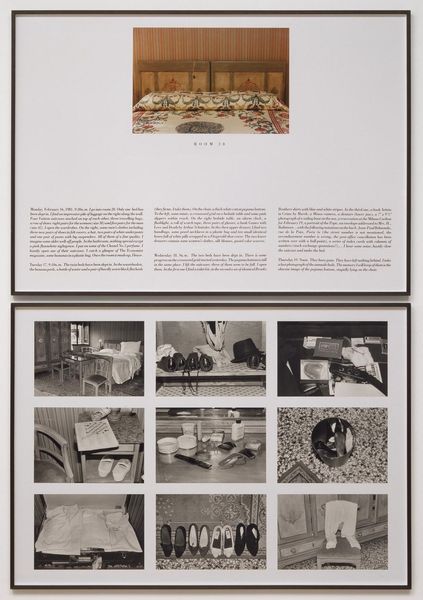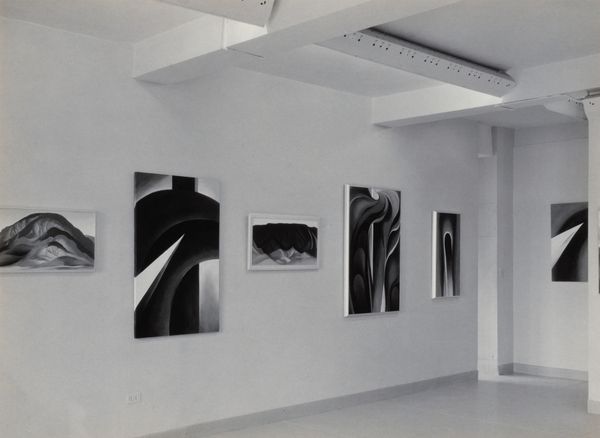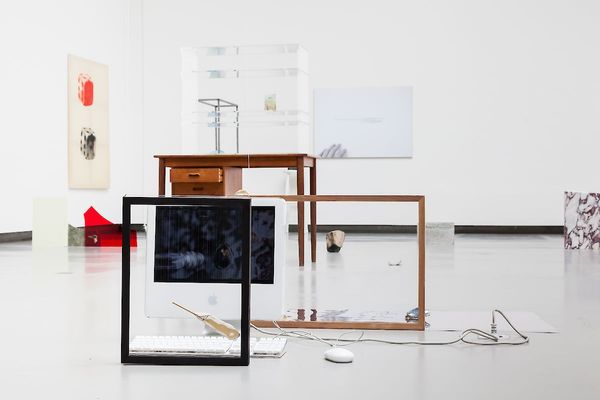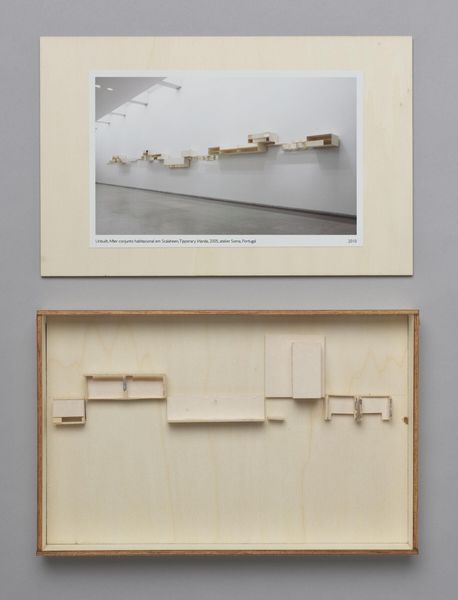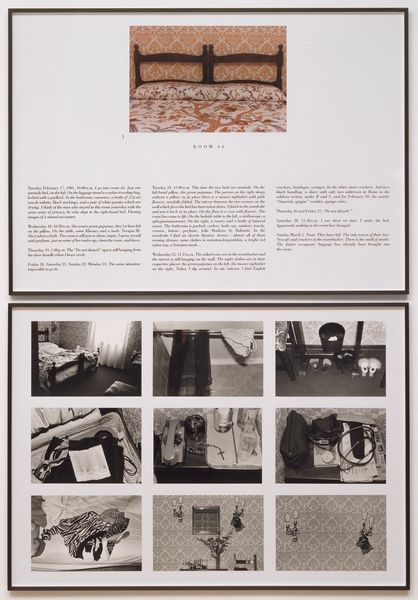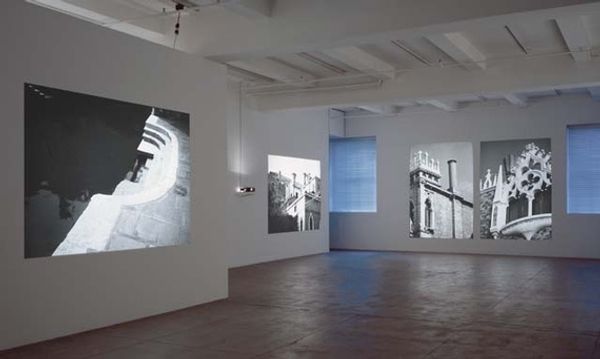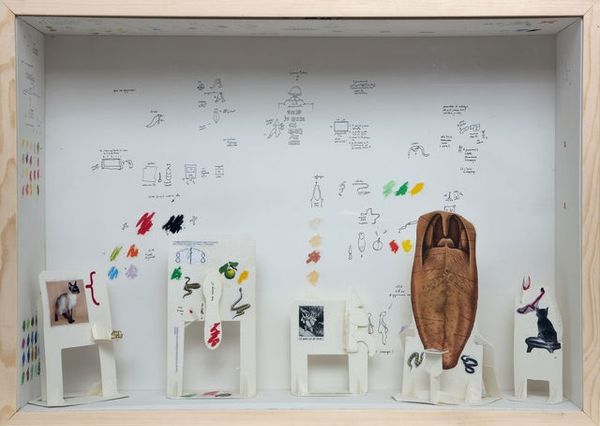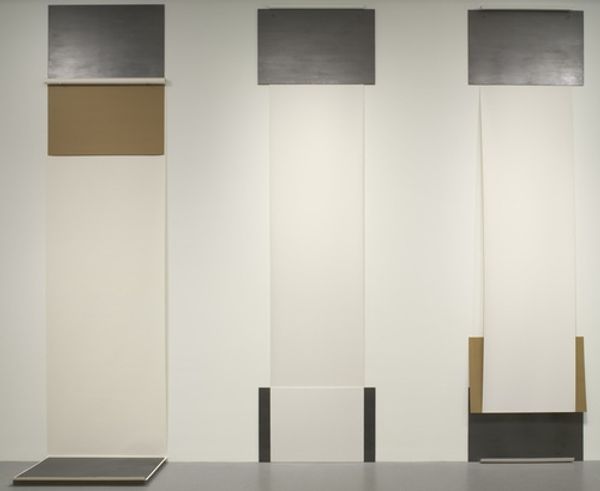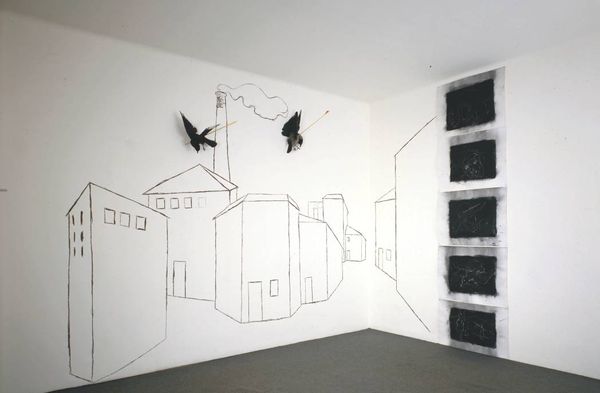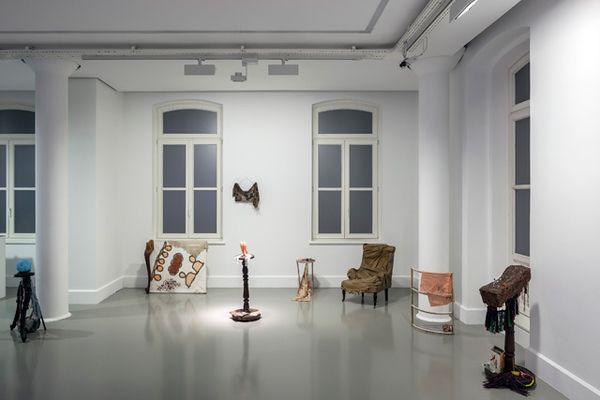
Copyright: Allen Ruppersberg,Fair Use
Curator: Allen Ruppersberg's "The New Five-Foot Shelf of Books," created in 2001, immediately strikes me as an exploration of space and knowledge through its unusual construction. What's your first take? Editor: Well, visually, it feels rather overwhelming. There's a lot to take in – the photographs of chaotic bookshelves, the physical books lined up precisely on a table… It’s as though the artist is presenting us with curated and uncurated knowledge. Curator: Precisely. The piece operates on several layers. Note how Ruppersberg employs photography as a representational strategy, presenting these images of crowded bookshelves, which contrast sharply with the actual, physical books arrayed before them. There's an inherent tension there between representation and reality. Editor: Yes, the means of production here are crucial. These aren’t pristine, hand-bound volumes. They look like everyday hardbacks, probably mass-produced. And that installation itself—that suggests a labor, not just intellectual, but manual. What’s he saying about access to information and the making of meaning? Curator: Perhaps he is suggesting the democratisation of knowledge. By using commonplace materials and presenting books en masse, he eschews the elitism often associated with literary pursuits. Editor: Absolutely. But it also raises questions about labor, both the intellectual labor of writers and the physical labor of printing, binding, and shelving these volumes. Also the labor of the artist to install the artwork and to create its mise-en-scene... Where does true value lie? In the individual volume or the totality? Curator: Good question. Through composition, scale, and representation, the viewer becomes part of that dialogue as well. In other words, you see the artist trying to expand and challenge any definition. Editor: So, while the material reality points to everyday objects and production, the interplay elevates it. Curator: It asks us to consider the intrinsic and external aspects simultaneously. And this dialogue that it generates becomes very fertile. Editor: In its strange way, then, Ruppersberg is revealing what's invisible. A complex installation art. Thank you.
Comments
No comments
Be the first to comment and join the conversation on the ultimate creative platform.
